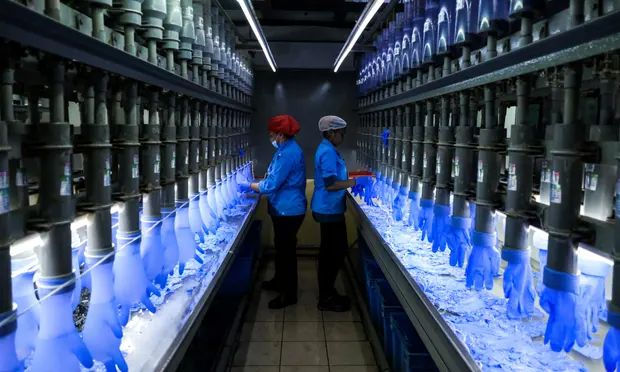The Blockbuster Potential of Mounjaro: Analyzing Eli Lilly's Market Strategy and Future Projections
- DR ARAVIND REDDY

- 9. Okt.
- 3 Min. Lesezeit
In the competitive landscape of pharmaceutical giants, Eli Lilly's Mounjaro (tirzepatide) isn't just another new drug—it's a strategic masterstroke that has positioned the company to dominate the metabolic disease market for years to come. With peak annual sales projections reaching $50 billion or more, Mounjaro and its weight-loss counterpart Zepbound are on track to become some of the best-selling pharmaceuticals in history.
The Unprecedented Financial Trajectory
Record-Breaking Market Adoption
Mounjaro achieved what few drugs in history have accomplished:
$1 billion in sales within its first year
$5 billion in annual sales by Q2 2024
Projected peak sales of $25-30 billion for Mounjaro alone
Combined tirzepatide franchise (Mounjaro + Zepbound) potential of $50+ billion annually
To put this in perspective, the current best-selling drug of all time, Humira, peaked at around $21 billion annually. Tirzepatide's dual approval for both diabetes and obesity creates a market potential that dwarfs most previous blockbusters.
Eli Lilly's Brilliant Market Strategy
1. The Dual-Indication Approach
By securing FDA approval for both type 2 diabetes (Mounjaro) and obesity (Zepbound), Eli Lilly created a powerful strategic advantage:
Market Segmentation:
Mounjaro targets the 40 million Americans with type 2 diabetes
Zepbound addresses the 110 million Americans with obesity
Combined patient population: Nearly half of all US adults
Pricing and Reimbursement Strategy:
Different pricing for each indication
Separate reimbursement pathways through medical vs. pharmacy benefits
Reduced payer resistance by separating diabetes and obesity populations
2. The Clinical Trial Domination
Eli Lilly didn't just prove efficacy—they proved superiority:
SURPASS Program (Diabetes):
Demonstrated superior A1C reduction vs. all major competitors
Showed unprecedented weight loss as a side benefit in diabetes patients
Built overwhelming evidence for first-line use
SURMOUNT Program (Obesity):
Achieved weight loss results surpassing bariatric surgery outcomes
Demonstrated 15-26% total body weight loss across trials
Showed cardiovascular risk reduction in high-risk patients
3. Manufacturing and Supply Chain Investment
While supply constraints have been challenging, Eli Lilly's massive manufacturing investment reveals their long-term confidence:
$9 billion in new manufacturing facilities
Multiple production sites to ensure supply security
Vertical integration for key components
Capacity planning for global demand
The Competitive Landscape: A Two-Horse Race
The GLP-1 market has essentially become a duopoly between Eli Lilly and Novo Nordisk:
Eli Lilly's Advantages:
Superior efficacy with dual GIP/GLP-1 mechanism
First-mover advantage in next-generation incretin therapy
Stronger weight loss profile
Broader patent protection
Market Share Projections:Analysts project Eli Lilly will capture 45-55% of the combined diabetes/obesity market by 2030, representing a market worth over $100 billion annually.
Future Growth Drivers
1. Indication Expansion
The tirzepatide pipeline includes studies for:
Heart failure (SUMMIT trial)
Sleep apnea (SURMOUNT-OSA)
NASH/MASLD (metabolic dysfunction-associated steatotic liver disease)
Peripheral artery disease
Each successful indication could add billions in annual revenue.
2. Formulation Improvements
Oral formulations in development
Next-generation combinations (tri-agonists)
Extended-release formulations
Combination products with other mechanisms
3. Global Market Penetration
European and Asian market expansion
Emerging market access strategies
Government reimbursement negotiations
Challenges and Risks
1. Supply Constraints
The current manufacturing limitations represent the biggest near-term challenge, though Eli Lilly's massive capital investment should resolve these by 2026-2027.
2. Pricing Pressures
Government drug price negotiations (Inflation Reduction Act)
International price controls
Payer pushback on high-cost medications
3. Competitive Threats
Novo Nordisk's next-generation candidates
Oral GLP-1 advancements
Potential new mechanisms from other pharmaceutical companies
The Investment Perspective
Wall Street's View
Consensus "Strong Buy" rating
Price targets reflecting 20-30% upside
Projected earnings growth of 15-20% annually through 2030
Dividend growth supported by massive cash flow
Long-term Value Creation
Eli Lilly's market capitalization has surged past $700 billion, making it the most valuable pharmaceutical company in the world. The success of tirzepatide has fundamentally transformed the company's growth trajectory and competitive positioning.
What This Means for Healthcare
The commercial success of Mounjaro/Zepbound represents more than just financial achievement—it signals a paradigm shift in how we treat metabolic disease:
Treatment Becomes Prevention:These medications demonstrate that aggressive treatment of obesity and diabetes can prevent downstream complications, potentially reducing costs for heart disease, kidney failure, and other expensive conditions.
Economic Impact:While drug costs are substantial, the potential reduction in overall healthcare spending could be transformative if these medications reduce complications and improve productivity.
The Bottom Line
Eli Lilly's execution with Mounjaro and Zepbound represents one of the most successful pharmaceutical launches in history. The company's strategic vision—from clinical development to market access—has positioned tirzepatide to become not just a blockbuster, but a franchise that will define the metabolic disease treatment landscape for a generation.
For patients, investors, and healthcare systems alike, the tirzepatide story is just beginning. The coming years will reveal whether this medication can deliver on its promise to transform metabolic disease treatment while creating unprecedented value for its manufacturer.
Dr Aravind Reddy




Kommentare